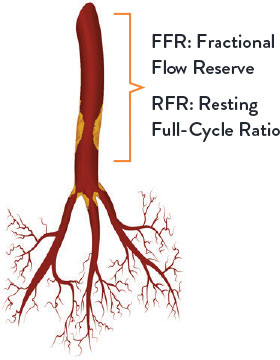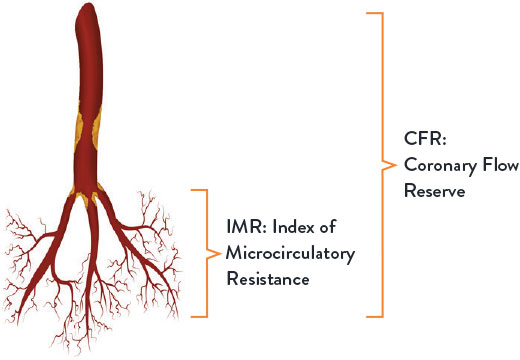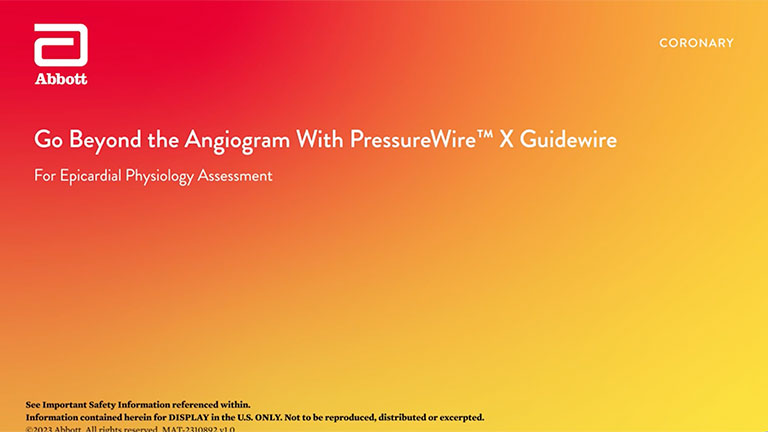Why Using Physiological Indices Is Essential
Physiological measurements, including hyperemic (FFR) and non-hyperemic pressure ratios (NHPR), Index of Microcirculatory Resistance (IMR), and Coronary Flow Reserve (CFR) are used to assess for epicardial disease and microvascular dysfunction. Physiologic data from PressureWire™ X Guidewire leads to informed decision-making that is proven to improve patient outcomes and prevent unnecessary, repeat hospitalizations.1
Physiological Indices Defined
Objective Diagnosis of Epicardial Disease and Microvascular Dysfunction
View how PressureWire™ X Guidewire measures Fractional Flow Reserve (FFR), Resting Full-cycle Ratio (RFR), Index of Microcirculatory Resistance (IMR) and Coronary Flow Reserve (CFR).
Test your knowledge of physiological indices with our quiz

Physiology-Guided Decision Making Leads to Better Outcomes


Society Guidelines for Physiologic Indices
| Diagnosing Epicardial Stenosis | Diagnosing Coronary Microvascular Dysfunction | |||
|---|---|---|---|---|
| FFR | RFR | IMR | CFR | |
| Guidelines | ACC/SCAI (view here) | ESC Guideline 2019 (view here) AHA/ACC Guidelines (view here) | ||
| Cutoff Value | ≤ 0.82 | ≤ 0.893 | ≥ 251,* | < 2.51,* |
| Formula | Pd/Pa at hyperemia | Lowest Pd/Pa ratio of whole-cycle | Pd x Hyperemic Flow | Hyperemic Flow/Baseline Flow |
| Hyperemia | Yes | No | Yes | Yes |
*IMR and CFR cutoffs in population of ischemia with no obstructive coronary artery disease (INOCA) patients, CorMicA trial.1
RFR is recognized by the Appropriate Use Criteria with an approved coding recommendation by ACC/SCAI.
Assessing whether Epicardial Stenosis needs intervention because there's more to CAD than an angiogram shows
Assessing Coronary Microvascular Dysfunction (CMD) because CMD may contribute to recurrent angina
References
- Ford TJ, et al. 1-year outcomes of angina management guided by invasive coronary function testing (CorMicA). J Am Coll Card Intu. 2020;13:33-45.
- Jeremias A, et al. A test in context: fractional flow reserve: accuracy, prognostic implications, and limitations. J Am Coll Cardiol. 2017;69(22):2748-2758.
- Kobayashi Y, et al. Agreement of the resting distal to aortic coronary pressure with the instantaneous wave-free ratio. J Am Coll Cardiol. 2017;70(17):2105-2113.
MAT-2003863 v3.0


